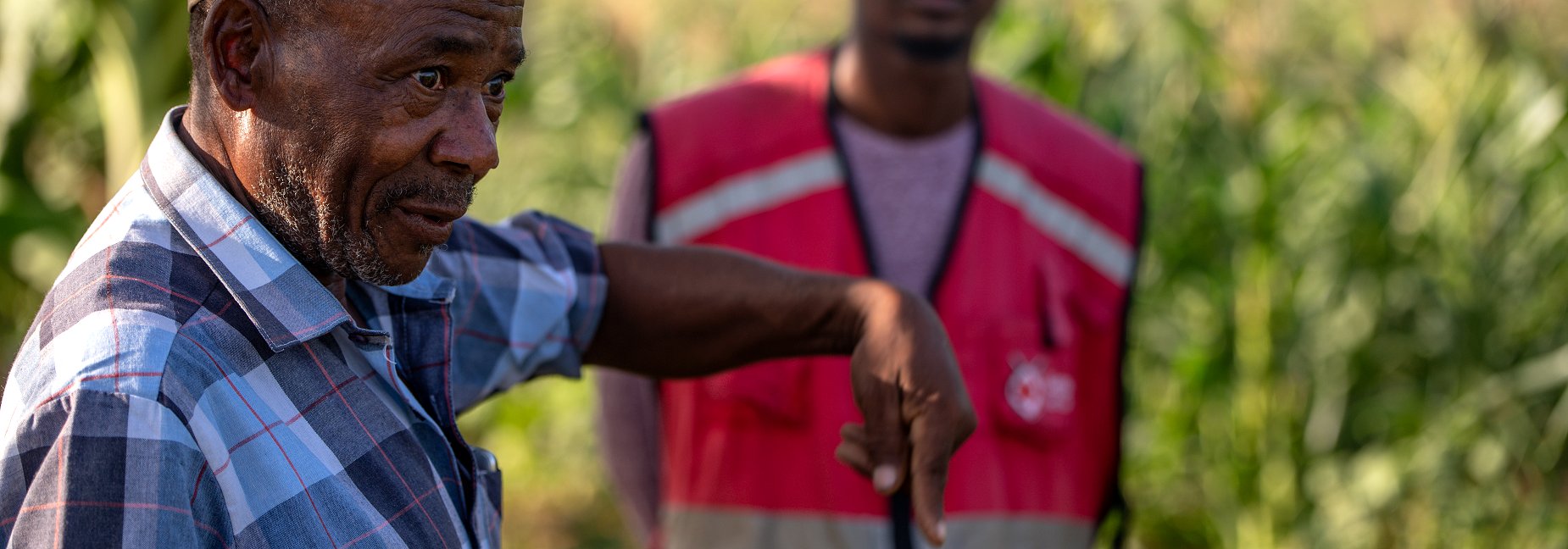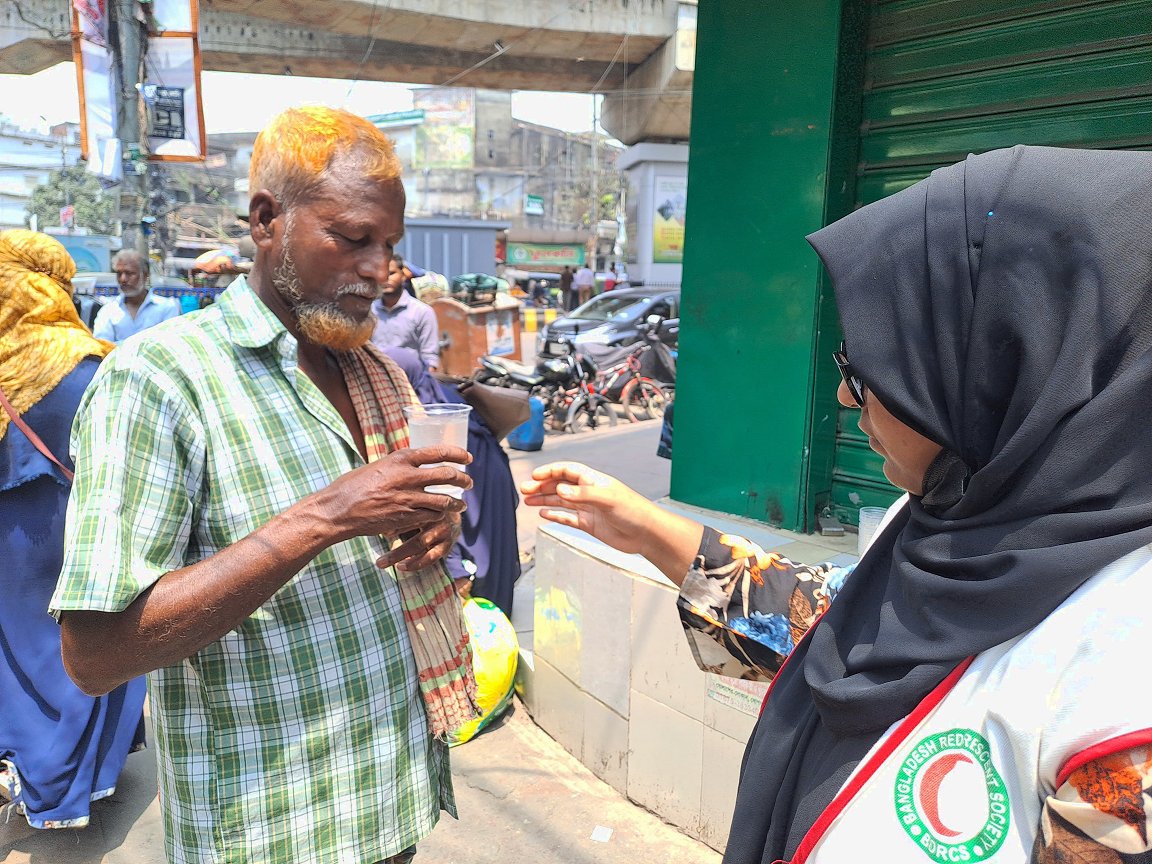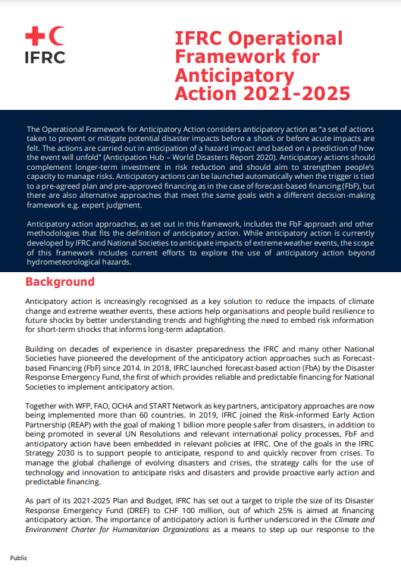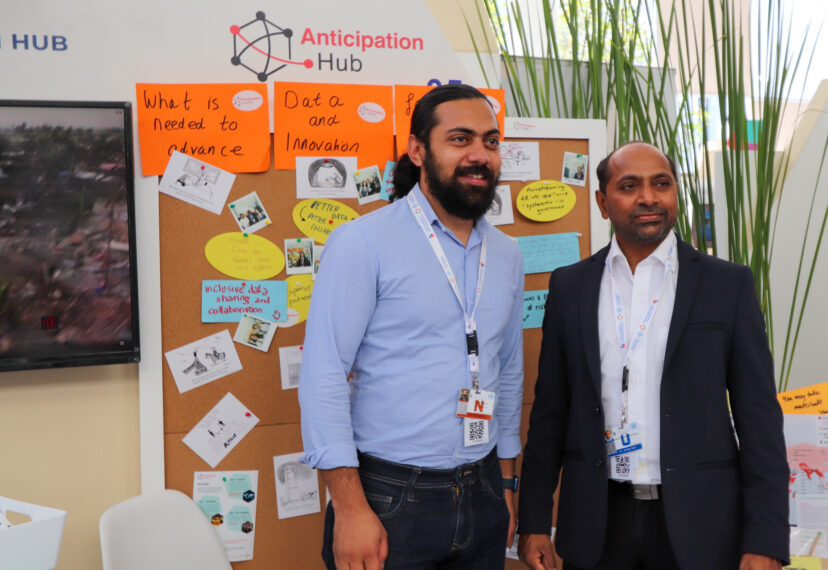Advances in weather forecasting and climate science now enable us to act before disasters strike rather than investing primarily in humanitarian response afterwards. These anticipatory approaches enable more people to receive the needed assistance ahead of predictable shocks.
Anticipatory action saves lives and limits the impact of disasters, and is a hallmark of the Climate Centre mission. Specifically, our work on anticipatory action builds on a long-standing element in the Climate Centre’s work: assisting the mainstreaming of early warning early action into Red Cross Red Crescent disaster management worldwide.
Our team comprises meteorologists, social scientists, hydrologists, and humanitarian experts, and our expertise notably lies in designing anticipatory action, including forecast-based financing (FbF), a concept developed by the Climate Centre and the German Red Cross in the early 2000s. Based on forecast information and risk analysis, FbF ensures the timely release of humanitarian funding for activities agreed in advance to meet a hazard.
We support anticipatory action and FbF in many ways, and are closely involved in developing forecast-based financing programmes worldwide, providing ongoing technical support to National Societies and their partners working on the concepts.
In addition to developing these mechanisms, we spearhead advocacy efforts, capacity building, research, critical reflection, learning and innovation on all aspects of anticipatory action. We also support mainstreaming the anticipatory approaches into social protection systems to ensure they are scaled up.
For more information contact Irene Amuron, Head of Anticipatory Action, on amuron@climatecentre.org.





